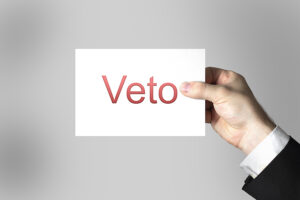Cash burn is so 2020.
To keep with the recent theme of calling out the obvious, it’s time to talk about the next big risk for product-centric InsurTechs. It’s not cash burn. Everyone knows about that now. (I tried to warn about that two years ago.)
Executive Summary
While most insurance professionals don’t think of reinsurance this way, it is absolutely the biggest source of wholesale funding for insurers, writes Ian Gutterman, founder and CEO of Informed Insurance.Here, Gutterman, who is also a long-time insurance industry investor and analyst, describes the perils of wholesale funding and offers the lessons of the Florida property insurance market to deliver a warning to those InsurTechs who are happily relying on reinsurers to fund their growth—a strategy that is doomed to fail.
This article was originally published on Gutterman’s website, “Ian’s blog: Nominal Returns” at https://www.iansbnr.com/.
Carrier Management is republishing it with Gutterman’s permission.
No, there’s a bigger threat: the Reinsurer’s Veto!
What’s that? We only have to look to recent events in Florida to find out.
Within the last 15 months, eight Florida-based home insurers have failed. Why? Sure, part of it was they have had bad results for years and were undercapitalized. But it wasn’t the regulators that shut them down or the rating agencies pulling the plug.
What really killed them? They couldn’t buy reinsurance. This is the Reinsurer’s Veto. When you are too dependent on reinsurance, your future is in the hands of the reinsurance community.
How does this apply to InsurTech? I’ll get there, but first let’s do a detour through the right side of the balance sheet.
The Perils of Wholesale Funding
Outside of insurance, there is a lot more attention paid to funding sources. If you’re going to make loans, you need to know how you will fund them and how stable your source of borrowing is.
Generally, sticky sources of funding like bank deposits are preferred as they are highly predictable and less rate sensitive. However, it can be expensive to build a retail funding network from scratch.
Thus, many financial models will choose to rely on wholesale funding. These are things like commercial paper, repos, “hot” consumer money such as high-yield jumbo CDs, asset-backed securitizations, receivable discounting, etc.
These are all tenuous sources of funding. Competition is steep. Rates can move quickly in response to market conditions. Liquidity can dry up if credit losses spike.
In other words, they are a riskier way to run a business. You can wake up one day and be unable to finance your business. The run on the bank risk is much higher for wholesale than retail funding. (Today’s George Bailey would be at the corporate treasury desk, not the local bank branch.)
Insurers Benefit From Stable Funding…Usually
How does this relate to insurance? We don’t normally think of insurers having bank run risk. The reason for that is, for the most part, insurers are funded by the “float” on unpaid claims.
Think of the insurance premium like a bank deposit (but better!). Like a deposit, it could be “withdrawn” at any time—if there is a claim—but the pattern of withdrawals (paid losses) is fairly predictable. Furthermore, customers can’t arbitrarily receive a claim on demand. (There is a reason bank deposits are called “demand deposits.”)
Thus, there is very little risk of a bank run. There is even less risk for a traditional life insurer. Nobody is going to choose to die sooner to accelerate payments from a wobbly insurer.
This element, as most know, is why Buffett loves insurers. The predictable source of borrowing allows him to make long-term investments without risk of a “margin call.”
However, this isn’t always true. Life insurers, in particular, have increased their exposure to runs through some of the market-sensitive products they offer in addition to death benefits.
We also have seen growth over the years of insurers using tools like GICs and funding agreements which are wholesale instruments bought by institutional investors solely for yield (and which the insurer, in turn, reinvests in riskier assets to earn a “spread”).
Reinsurance = Wholesale Funding
However, the biggest source of wholesale funding for insurers is reinsurance. While most insurance professionals don’t think of reinsurance this way, it is absolutely a source of funding.
If you want to debate the point by advancing the idea that this is not true because there is also risk transfer, I would remind you there are these things called cat bonds and insurance-linked securitizations. Yes, even cat risk transfer is a funding transaction.
There is certainly no doubt when it comes to quota share. Quota share reinsurance is operational debt. The reason companies don’t just use straight debt is because it would impact their credit rating. But, if you lever up through reinsurance, it largely gets a free pass. Yet, structurally, they accomplish the same goal. They let you write more business on the same amount of equity.
But in one key way, debt is preferable to reinsurance. You can term out your debt and have predictability. With reinsurance, while you can find the occasional three-year deal, you are typically going year to year, not knowing what the price will be when you renew—or even if you’ll find capacity.
One of the great tricks of the reinsurance world is that reinsurers convinced buyers that it’s stable and not a precarious source of short-term, variable-priced wholesale funding.
It is no more reliable than a credit card securitization.
The Reinsurance Death Spiral
This is really pretty simple. If you write too much premium relative to your capital and choose to fund it with reinsurance, then, in a year, your reinsurance provider can walk away. Maybe you can replace them with another provider. Maybe you can’t.

“What happens to burn when all the funds coming in from the reinsurers double in price…or stop entirely? If you’re not contemplating this in your burn model, your plan isn’t worth the napkin it was scratched on.”
If you can’t, then you have to write a lot less premium or you will be undercapitalized. If you are writing E&S or facultative risk, you may be able to adjust quickly and shrink your gross book dramatically. It won’t be fun, but you can, in theory, survive as a much smaller entity.
I say in theory because, a) your distribution will be pretty unhappy with you for dumping clients and will probably take away the business you prefer to keep; and b) your expense structure is likely optimized to your gross writings, not the net ones, which means you will have to drastically reduce your overhead without the ceding commission from the reinsurer to help fund it.
If you are writing admitted lines, you have a much bigger problem. Enjoy your meeting with the state DOI where you tell them you need to non-renew half your book because you lost your reinsurance. You are pretty much in liquidation mode at that point trying to sell off renewal rights so you can salvage some value for your investors.
The Giant Flaw in the MGA Model
So, are you finally ready for the punchline? Have you figured it out yet? The way most of the underwriting-based InsurTechs have grown is by using reinsurance for cheap capital.
If you’re not making an underwriting profit, the cost of capital is basically the after-tax NII (net investment income), so maybe 2 percent? If you’re generating underwriting losses, well, then it may be negative cost of capital! It’s certainly a lot cheaper than giving equity investors a piece of your company.
If inflated equity values were the Hare approach to building an InsurTech, then cheap reinsurance was its cousin, the Rabbit. And InsurTechs acted like they had a special hat they could pull an infinite number of Rabbits from.
This is why investors believe being an MGA is a magic trick. They get “dumb” reinsurers to fund all the growth rather than funding it themselves. What could go wrong?
A lot!
As I have pointed out in the past, there isn’t enough reinsurance capacity in the world to support every wannabe MGA startup. Even if there were, it assumes reinsurers will continue to be stupid and give away their capital for nothing.
They won’t. Eventually, they will demand higher prices or walk away completely.
If they demand higher prices, well, that ruins the economics of a lot of business plans. The idea that you can “lock in” a fat margin at the expense of the reinsurer will disappear.
Dependence on the Generosity of Others
This is what we have seen in Florida. The reinsurance gets so expensive that you are effectively upside down and it doesn’t make sense to write the business anymore. At the very least, the margins will get squeezed.
Note, even if the companies start to improve their loss ratios, they will still likely find that reinsurance prices will rise given past performance. Thus, any gross improvement is unlikely to lead to much net improvement.
Remember, these aren’t models where you reinsure say 20 percent. In that case, if reinsurance goes up 20 percent, you only need to raise the price 4 percent to stay even. Some of these companies are reinsuring 90 percent! If reinsurance goes up 20 percent, they need to raise their prices nearly as much just to maintain their already poor loss ratios.
Just as a reference point, Florida insurers were ceding around 30 percent of premium (yes, mostly XOL, so not apples to apples) and their reinsurers killed them. What happens to InsurTech MGAs reinsuring 50, 65, 90 percent if capacity walks away?
The only reason these MGA models were allowed to exist in the first place was through the benevolence of reinsurers. Without that gift, it never happens. It was as unlikely as a Rabbit becoming the Easter Bunny.
The Easter Bunny Isn’t Real (Sorry!)
 It’s great that these companies are finally paying attention to cash burn, but those calculations assume reinsurance stays in place and at similar terms. The greatest threat to burn rate isn’t those excess employees you hired (though they are a problem) or the free lunches and swag bags.
It’s great that these companies are finally paying attention to cash burn, but those calculations assume reinsurance stays in place and at similar terms. The greatest threat to burn rate isn’t those excess employees you hired (though they are a problem) or the free lunches and swag bags.
What happens to burn when all the funds coming in from the reinsurers double in price or stop entirely? If you’re not contemplating this in your burn model, your plan isn’t worth the napkin it was scratched on.
Reinsurers won’t be dumb forever. If you’re assuming otherwise, you may be betting your business on their continued generosity. Because, just like the Easter Bunny, Rabbits writing unlimited amounts of reinsurance for no profit are a myth.
At the end of the day, there’s only one true solution: Write profitable business.





















 Executives on the Move at Liberty Mutual, Cowbell, W. R. Berkley
Executives on the Move at Liberty Mutual, Cowbell, W. R. Berkley  Underwriter, Actuary Fears of AI Drop; Work Needed on Collaboration
Underwriter, Actuary Fears of AI Drop; Work Needed on Collaboration  Why ‘Good Enough’ Is Killing Insurance: The Hidden Cost of Satisficing
Why ‘Good Enough’ Is Killing Insurance: The Hidden Cost of Satisficing  California Workers Comp Combined Ratio for 2024 Highest in 20-Plus Years
California Workers Comp Combined Ratio for 2024 Highest in 20-Plus Years 








